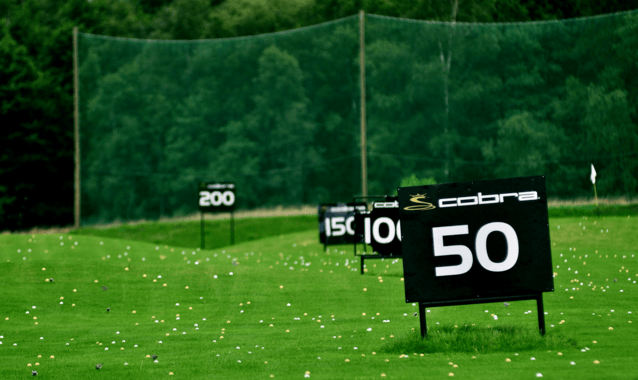
The Tour Player “1/3 Rule” For Better Practice
How do you spend your time practicing?
How do you know you are building the skills you need to get better? Are you using the right practice drills for better golf?
One of the biggest mistakes a golfer can make is to spend countless hours trying to groove a perfect “machine-like” swing in the hope that it will work automatically on the course. If this is all you’re doing during your practice, then it’s not time well spent.
The reason is the range and the course are very different places…
On the course, you’ve got lots of external factors that you don’t have on the range, such as the need for strategy, your score, other players etc. You also don’t get the same shot twice, that most golfers have on when practicing on the range.
If you don’t practice for the course, can you really expect to perform well there?
This is why most Tour players use the “⅓ rule” when practicing. I heard about this when talking to my good friend and European Tour coach, Jonathan Wallet of Elite Coaching Golf Academy.
This divides your practice time into the following areas:
- ⅓ Block Practice
- ⅓ Random Practice
- ⅓ Competitive Skills Practice
Let’s assume you have an hour to practice. Here’s my suggestion for how you should split your time, whether you are practicing long game, short game or putting.
Block Practice Drills For Golf
The first 20 mins should be spent working on your technical practice drills, that you might have been given by your PGA pro.
To make this time effective, you should hit one club to the same target, thinking ONLY about your movement. What you’re doing here is laying new “neural pathways”, which will eventually become your “muscle memory” (automatic movement). Whether the ball is hitting your target or not, it’s not important.
Random Practice Drills For Golf
During the next 20 minutes, you’re not going to think about your technique at all.
It’s time enter your subconscious “trust” mode and practicing mixing things up. During this phase of practice you will need to change clubs every shot and hit to different targets. The idea here is that you train yourself to adapt to different shots quickly, just like you have to do on the course.
A good drill during this time is the “nine shots” drill, which challenges you to hit every possible ball flight to a different target.
By not thinking about your swing at all, you have to start to use your senses (visualization and feel), to play shots which is what you’ll need during play.
Competitive Skills Drills For Golf
During this time, you’ll need to have consequences, like you do on the course. You’re going to practice experiencing the additional pressure you feel on the course using games and challenges.
An example of one such game is: “3 fairways, 3 consecutive balls”.
1. Pick 3 imaginary fairways using targets or posts on the range.
2. Using the driver, attempt to hit 3 balls down the first fairway.
3. If you make all 3, move on to the second fairway, and then to the third.
The aim is to get all 9 balls down the 3 fairways. If you miss a fairway, you have to start over at the first ball. If you get to the 3rd fairway, they’ll be lots of pressure on balls 7, 8 and 9!
Here’s how a one hour putting practice session might look…
Putting practice (one hour)
1. 20 mins working on your stroke using a gate, not being overly concerned about the outcome of each putt.
2. 20 mins working on random length putts. No thoughts about the stroke, all your focus is on the line the ball will take to the hole and trusting yourself to hit it.
3. In the final 20 mins you can choose from many competitive skills challengessuch as getting 5 consecutive balls in the hole from 2-3-4-5-6 ft.
If you liked the sound of some of these drills, there’s plenty more in my “Random and Competitive Skills Practice Book“.



The 1/3 rule looks like good discipline for me. I frequently go to the range and hit away, without thinking, I thought this was my effort to develop muscle memory.
Thank you,
Mark Leslie